Beautiful Hoseshoe Lake!
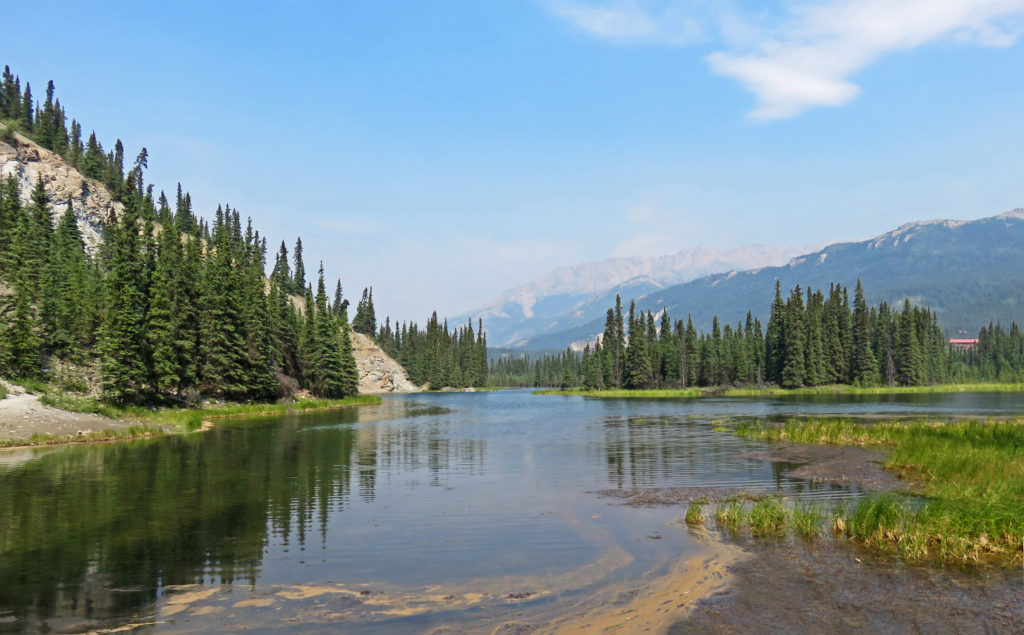
Lovely and quiet Horseshoe Lake.
July 22, 2017
We took our time getting up and out today. It was our day of leisure, and time to explore Denali National Park on our own. We were greeted by a sunny blue-sky morning as we left the lodge for a day full of adventure. After a hearty breakfast, we walked to the Main Lodge to wait for a shuttle bus to the park entrance. Daypacks in tow, we jumped on the bus and a few minutes later got off at the visitor center.
There we spent time looking at some interesting exhibits regarding the park and its inhabitants. After viewing a nature film, we headed over to the park bookstore where we purchased several items. After looking at a map of the trails near the park entrance we decided to hike Horseshoe Lake Trail, a short two-hour loop.
We headed into the woods and the trail took us down about 200 feet in elevation to the level of the river and lake. Mid-way down, we paused at a vista point with a bench overlooking the lake. The lake is appropriately named and very clear. A small stream of clear water flows from the lake and over several beaver dams into the nearby Nenana River.
As we hiked through the taiga forest, the well-maintained and marked trail led us to the base of the hill where we came face to face with the gray, silt-laden Nenana River. The river bank was covered with well-worn rocks of all sizes and types (volcanic, metamorphic, sedimentary) that had been broken off miles away by ancient glaciers. Further down the riverbank we saw two kayakers navigating the rushing river. It looked like fun.
When we approached Horseshoe Lake, we encountered three young hikers, one of whom was wearing a “bear bell” on her daypack. Its jingle was clearly audible to our ears for at least 100 yards. The oxbow lake held back by beaver dams was lovely and quiet. The lake, an abandoned meander of the Nenana River, was once a part of the river’s main channel until the accumulation of silt and the building of dams by beavers caused the river to carve a new course. The path led us around the lake perimeter. There was clear evidence of beaver activity around us—gnawed-down trees of various sizes and partially-chewed trunks. Unfortunately, we didn’t see any of the busy critters.
As we left the lakeshore, part of the path consisted of boardwalks over the fragile ground cover. We also saw many areas that the Park Service had blocked to entry with small wooden posts driven into the ground with “No Walking” symbols atop them. The purpose was to limit foot traffic and allow previously trod and damaged areas to recover.
At the end of the loop, we faced the long climb back. This part of the trail gave us our aerobic exercise for the day. Luckily, the log step spacing of the path proved ideal for a steady upward march. Once back on top, we continued walking to the science center. The facility provided a spot to relax and learn. Rodge watched some interactive videos about the park’s wolves, invasive plant species and other topics. I was drawn to a huge quilt of the park with different color squares indicating the different types of terrain. It was a remarkable piece of work.
Upon leaving the center, we followed painted dinosaur tracks (park GPS) back to the main center where we caught the shuttle bus back to the lodge, arriving about 5 p.m. We decided to grab dinner and call it a day. Tomorrow Fairbanks!
Later,
Kathy
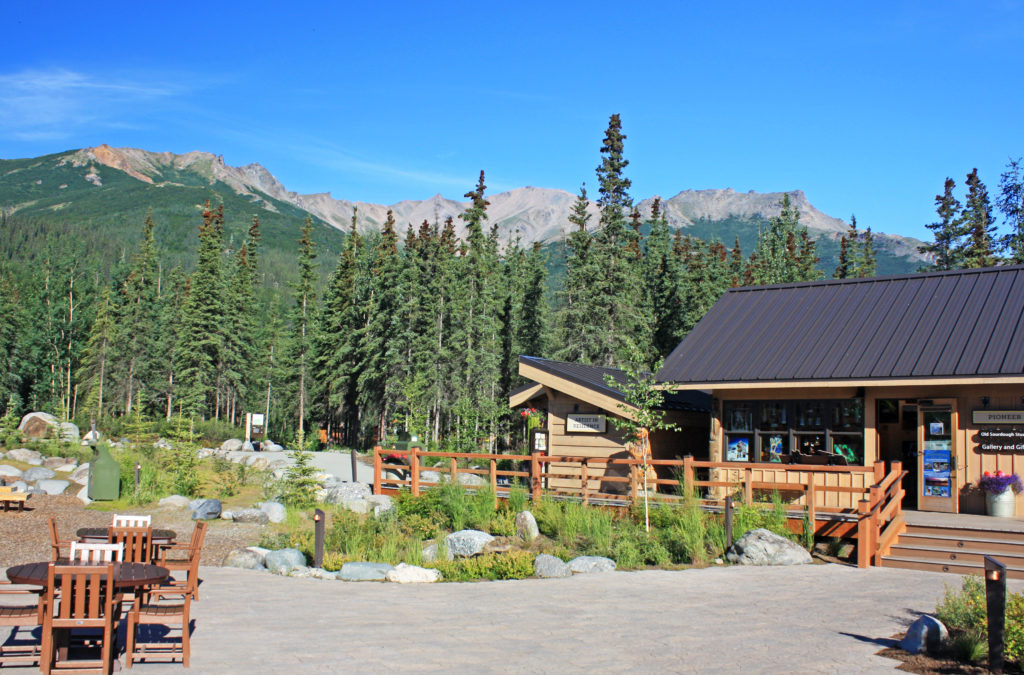
It was a blue-sky morning as we left the McKinley Chalet Resort.
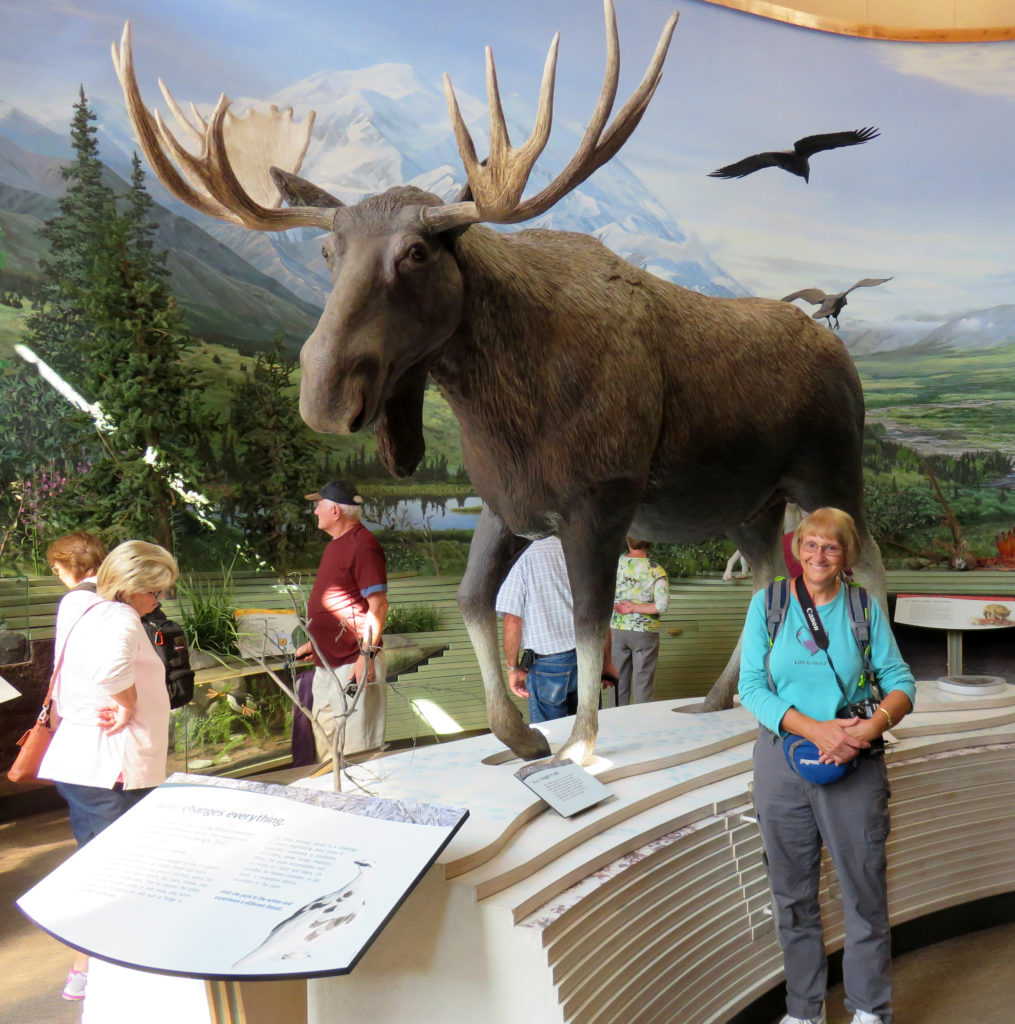
Kathy poses with Bullwinkle at the visitor center.
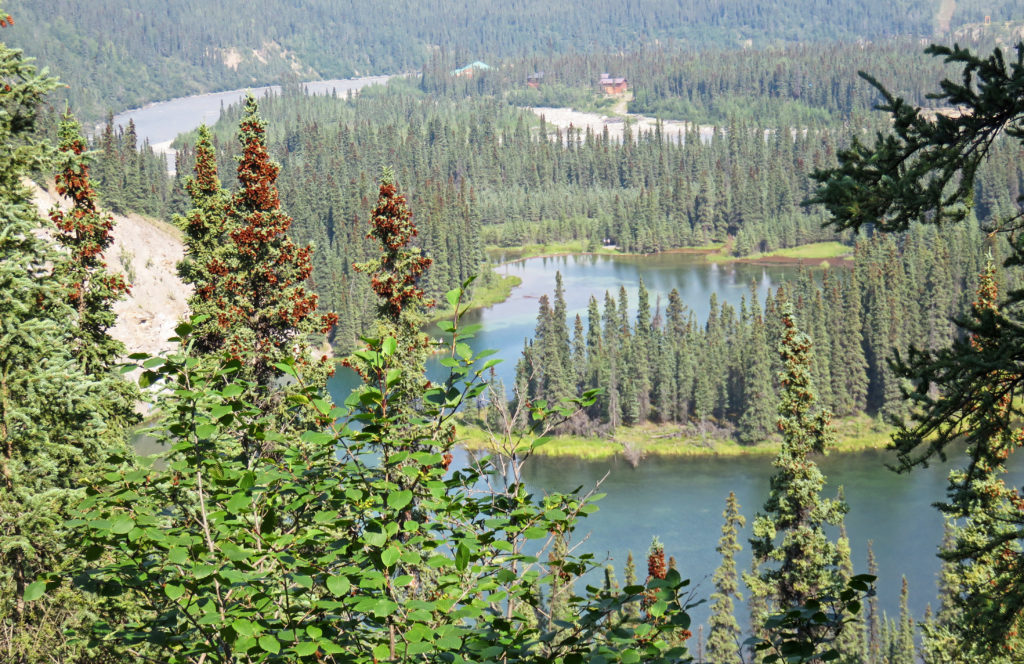
A birds eye view of Horseshoe Lake.
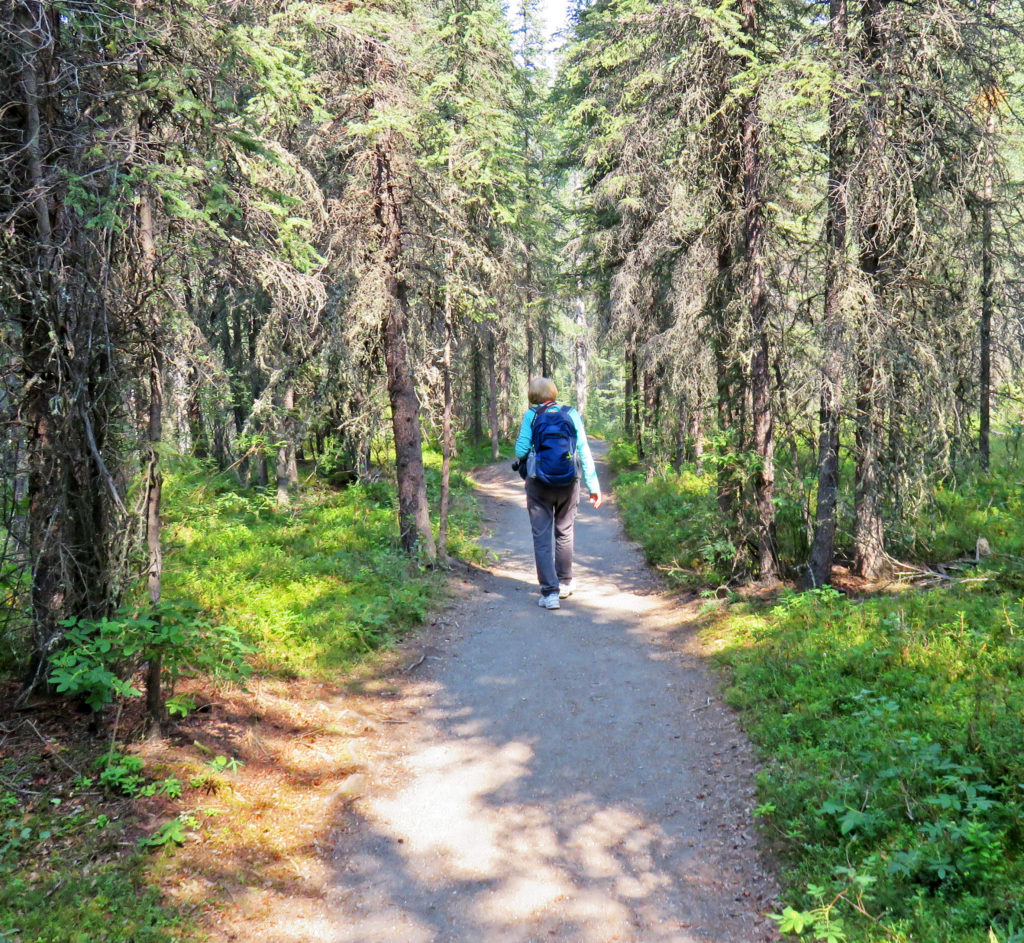
Kathy hiking through the taiga forest.
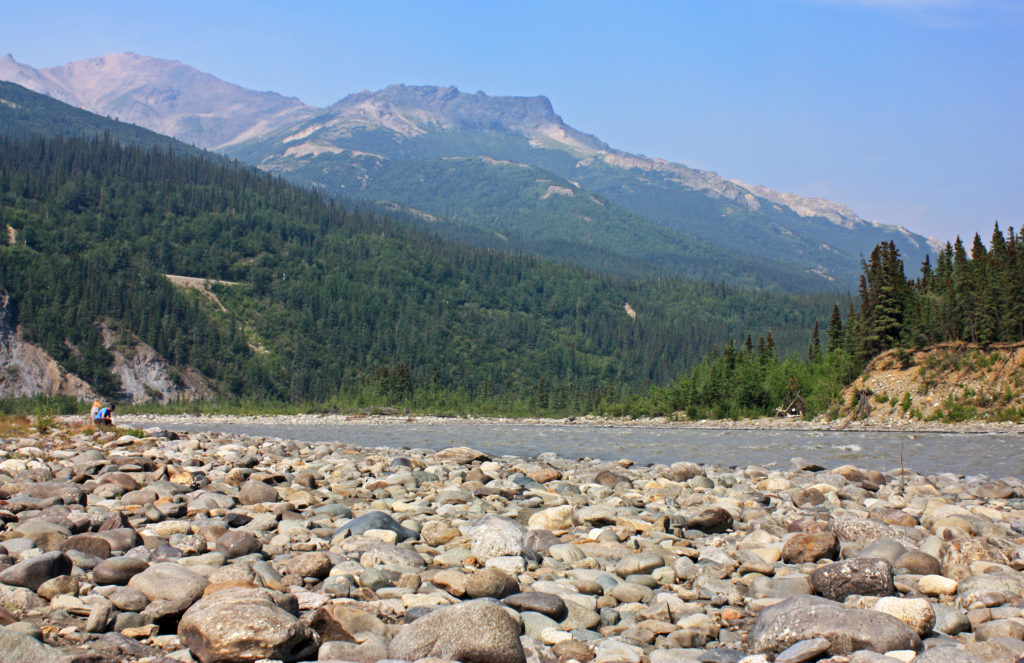
Hikers rest along the glacial-fed Nenana River.
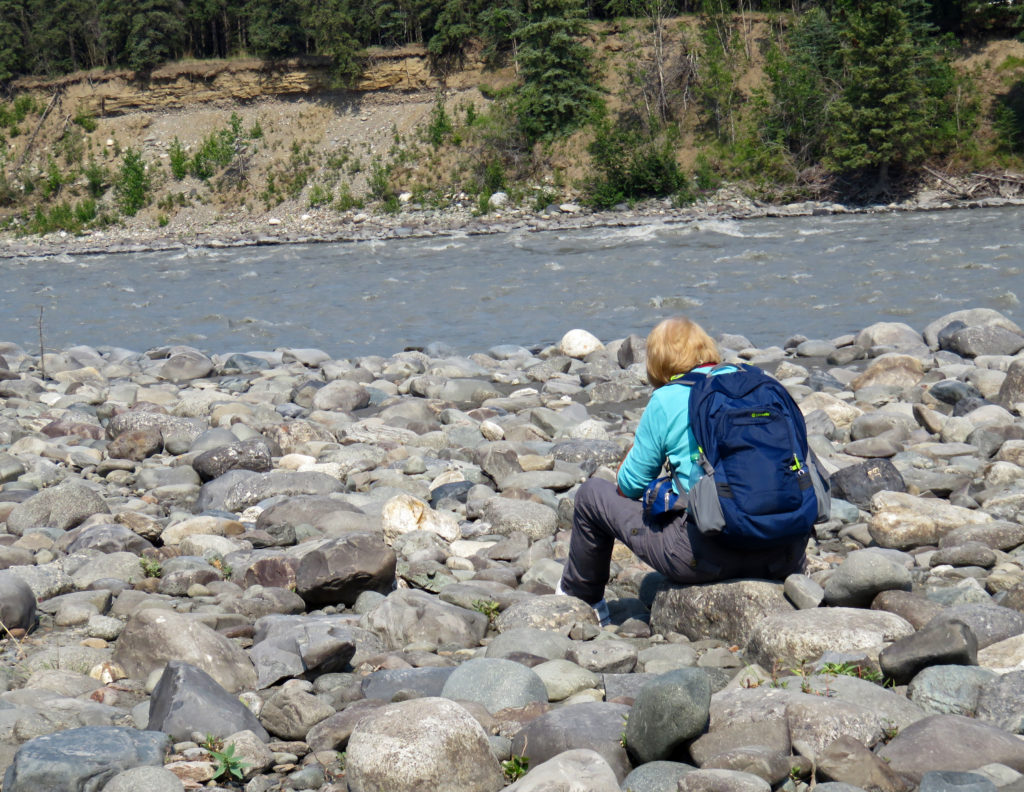
Kathy relaxing and taking pictures of the silt-laden river.
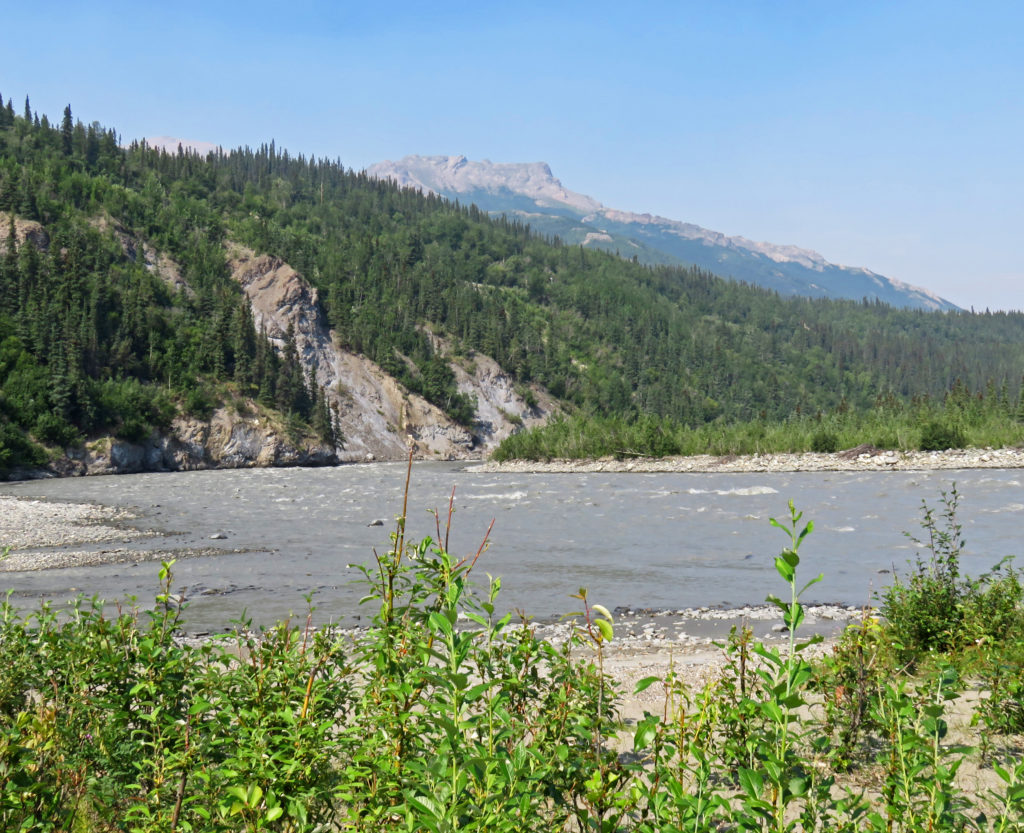
Along the banks of the rushing Nenana River.
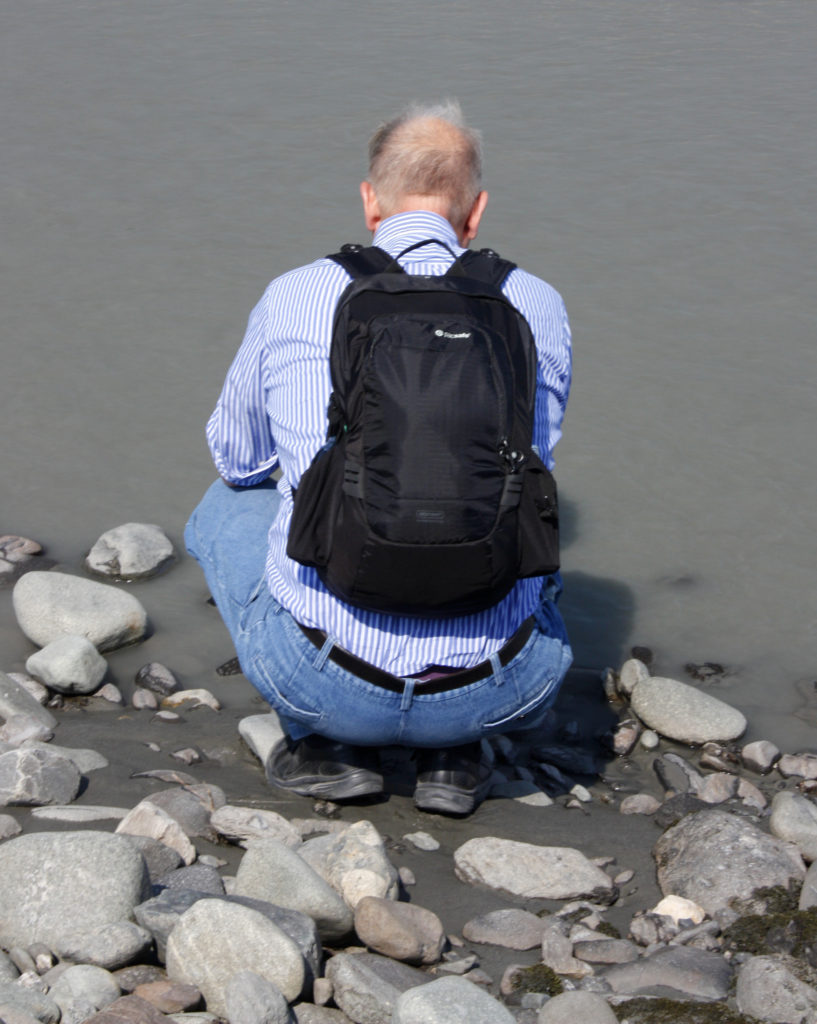
Rodge exploring the Nenana River.
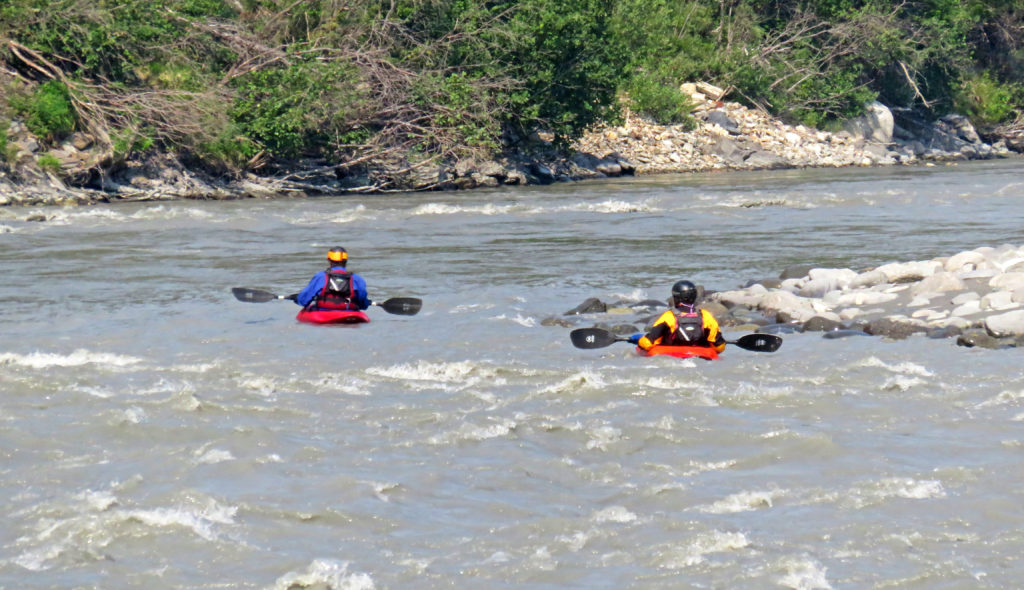
Two kayakers navigating down the rushing river.
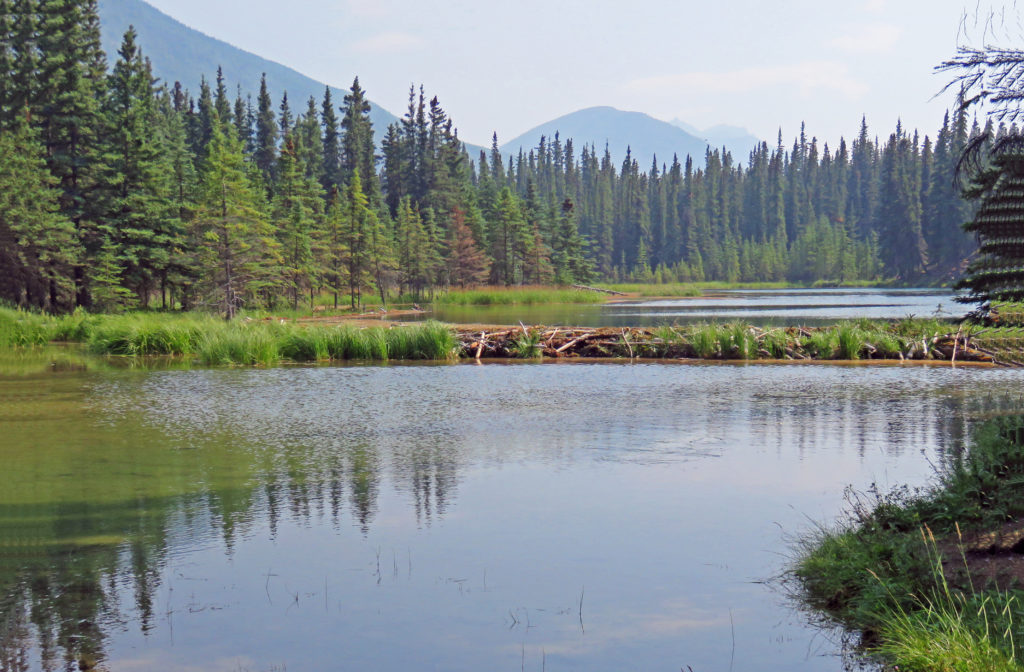
A beaver dam across Horseshoe Lake.
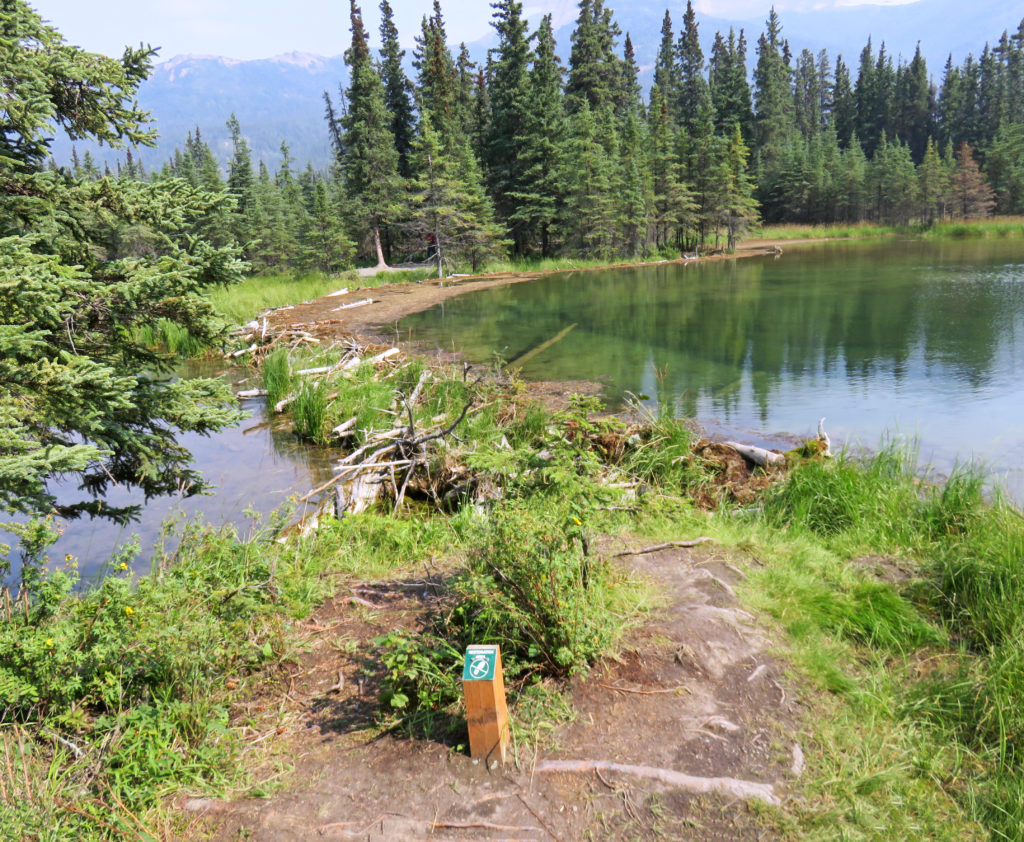
Small wooden posts with “No Walking” symbols atop them limit foot traffic.
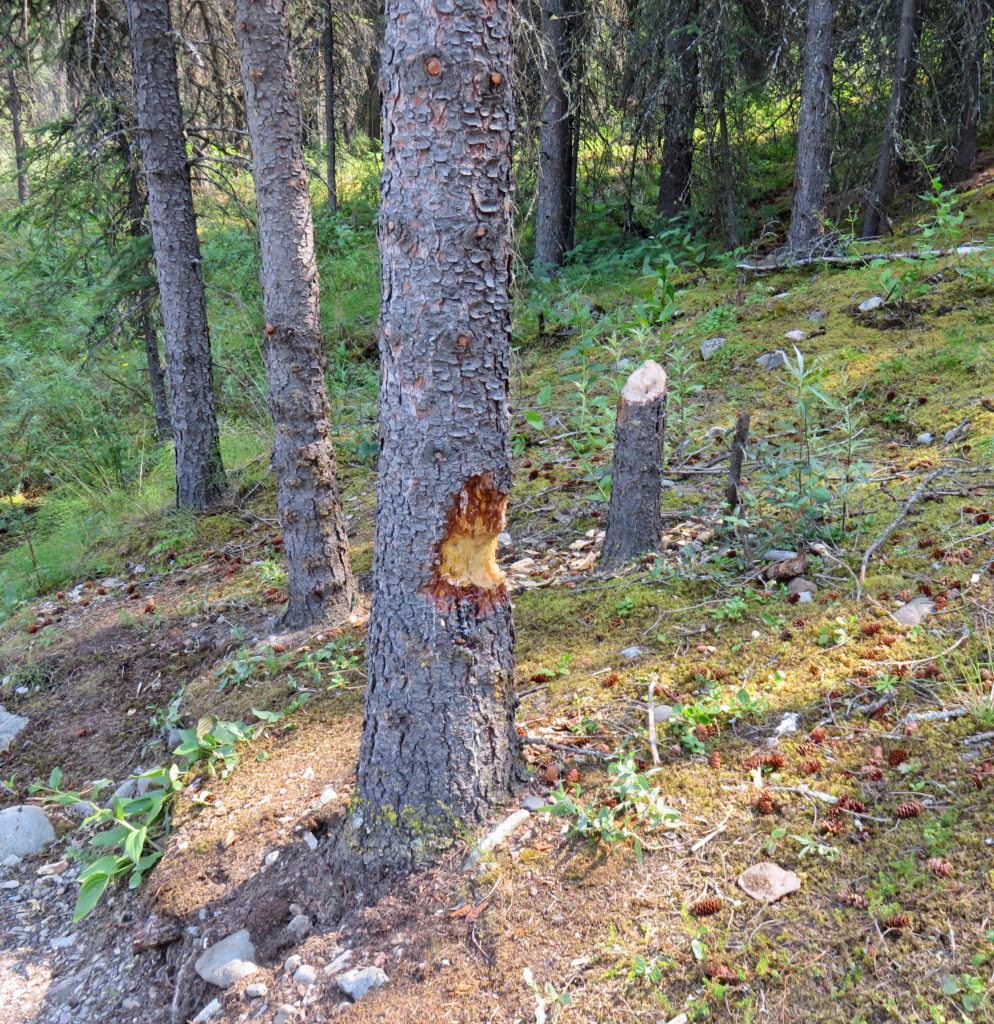
A partially-chewed tree trunk…evidence of beaver activity.


Leave a Reply